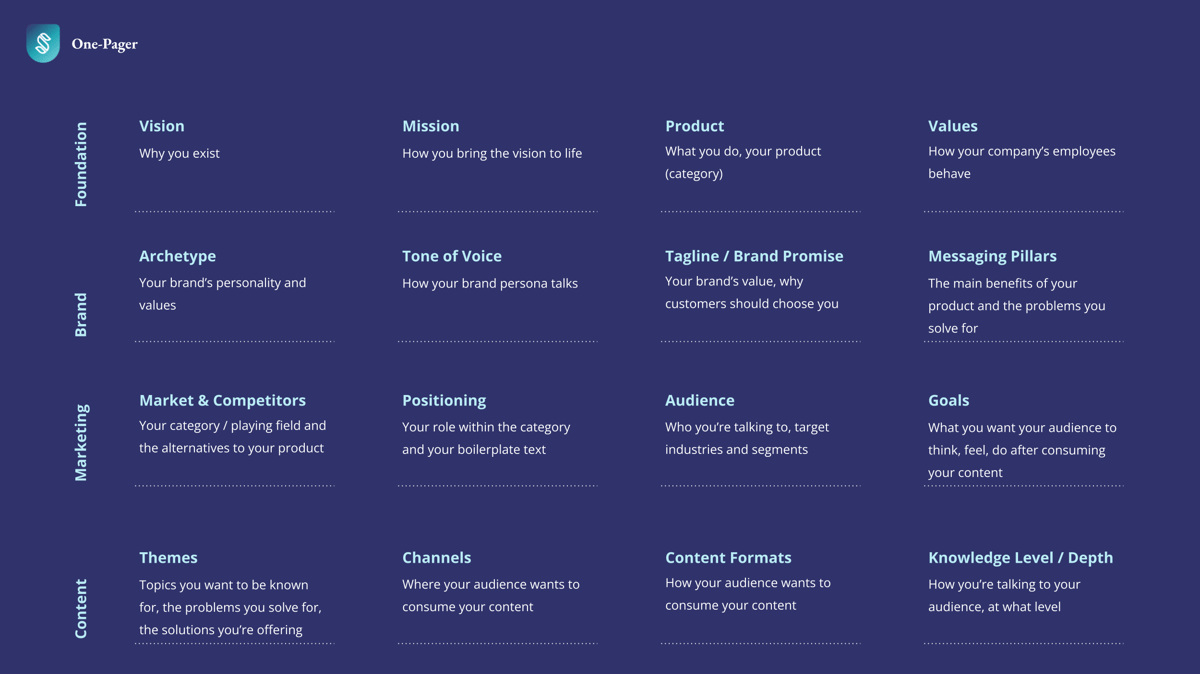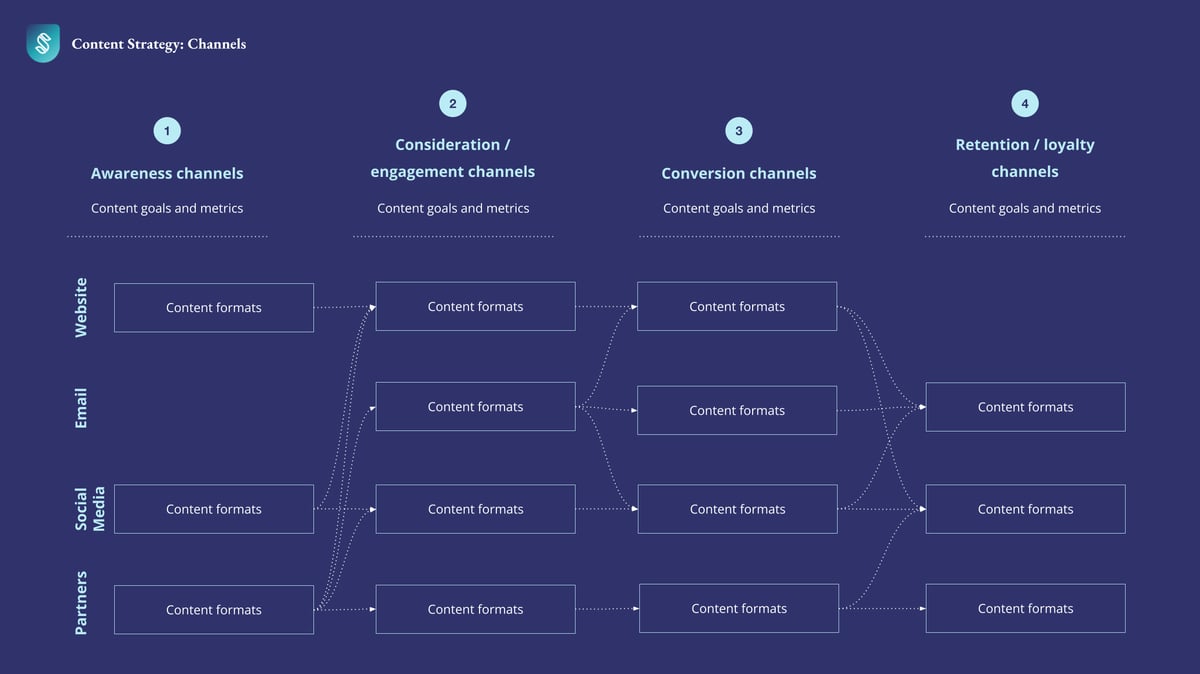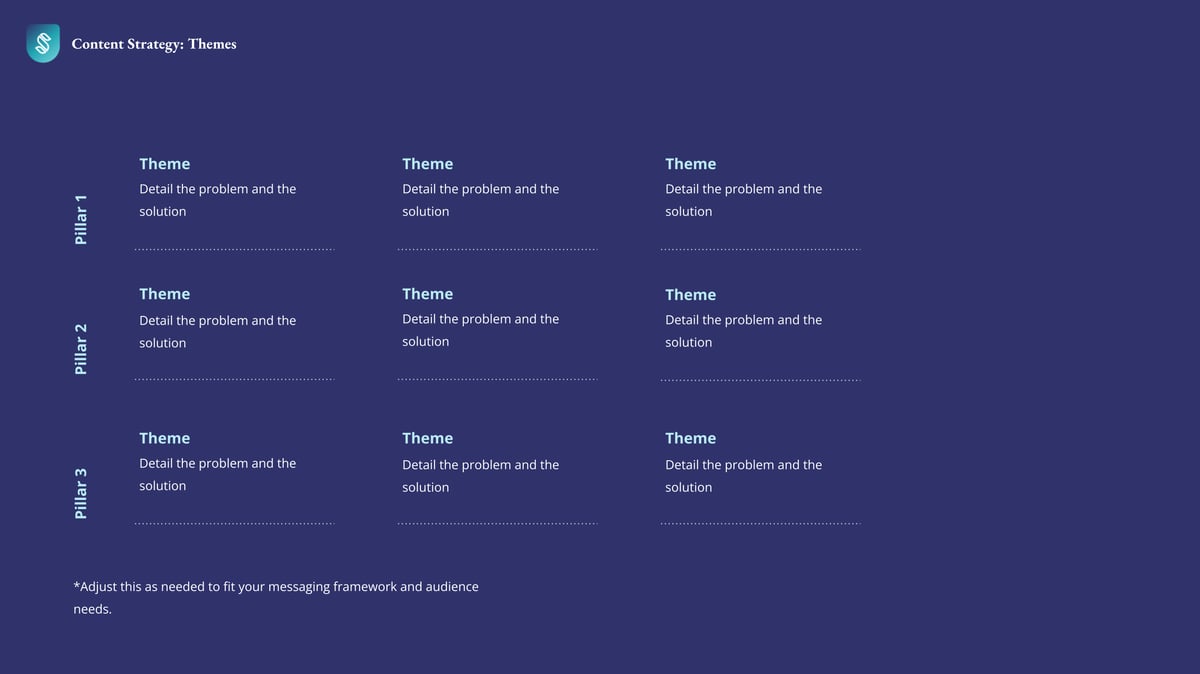If you're managing content for a SaaS company and you're not getting the results you want, or you feel you're creating content without a clear big picture and direction, this short guide is for you.
Very often, the misalignment between content and the overall marketing strategy is caused by a lack of clarity regarding purpose, direction, or goals. When you can't show what the role of content is in the bigger picture, and how content supports the overall marketing goals and KPIs, you're likely to end up producing a lot of content that's just there, doing nothing for your brand.
So what you want to do is start from your brand and marketing strategy and make sure your content is aligned, targeting the same verticals & ICPs, following your brand narrative and messaging framework, and using the best channels and formats for your marketing goals.
Let's see how to do this in practice.
Before you plan anything for your content, make sure you have clarity on the:
Category you’re in
Positioning
Brand narrative
Messaging framework
Brand visual identity
Brand values and voice

Image: Brand, Marketing and Content Strategy Template
From a marketing perspective, make sure you know:
What verticals you’re targeting — including their pain points, needs, and wants
Who your ICP is — job titles, decision-making power or role in the DMU (end user, budget approver, decision maker, etc.)
What methodologies you’re using — inbound, paid, ABM, field/events, lifecycle marketing, partner marketing, conversational marketing, etc.
What channels you’re in
What marketing funnels you have in place
Who your competitors are — direct, indirect
Who your partners are — tech, channel
If you know all these, you can move on to the content strategy part.

Image: Content distribution
The one-pager and the channel overview are part of this SaaS brand, marketing and content strategy template.
Here, you first need to know:
What content you currently have (inventory) — website, assets
Where it is used — website, social platforms, marketing automation flows, sales presentations, knowledge hub, etc.
How your content is performing (audit) — is it on brand? Does it bring in the expected results per channel?
Content gaps — what are you missing, based on your audit, ICP, and competitor activity?
Now that you’ve collected all the information needed, you can proceed to the final step, which is aligning your content to your brand and marketing strategy.
Your content audit and gap analysis should help you identify issues such as:
Content that’s not on brand — visuals, messaging, tone and voice
Content that’s not performing — not bringing in leads or failing to qualify or convert them, not engaging your social audience, not increasing the content consumption for leads/customers
Content that’s missing — what your commercial org needs and it’s not yet available, or where your competitors are active and you’re behind
This is where you start when aligning your content strategy to your brand and marketing strategy.
So let’s take the first symptom — content that’s not on brand.
This one is the easiest to solve, and although the solution will depend on the problem, in most cases what you need to do is:
Fix the design
Review the main theme / topic of the piece of content and make sure it supports the brand narrative and is aligned to the messaging framework. This means making sure that every piece of content tells the same story, and conveys the same message for the industry / ICP.
Review the tone and voice — the message may be on point, but you also want to make sure that the content you’re producing is consistent and that prospects/customers can recognize your brand ID.

Image: Align content to brand and marketing strategy
Next, content that’s not performing. Here you’ll need to go more granular and for each symptom, dig deeper to understand why you’re underperforming.
For example, if you’re getting enough visitors on your blog, but they’re not converting (registering to webinars, downloading stuff, starting free trials, booking demos, etc.), you might need to improve:
the page structure or readability
the message, story flow, buildup, and CTA placement
the redirection flows — what should they read next to be persuaded
If you’re getting enough leads, but your # of MQLs doesn’t improve, you might want to review and improve your lead management workflow.
Do you have long qualification sequences, are leads dropping off at a specific stage, are some content types performing better than others?
Do you need to increase/decrease the frequency of your emails?
Do you need to improve the copy?
Do you need more clear CTAs?
If you’re getting enough MQLs, but they’re not moving to SQLs and deals, you might need to review:
Your lead qualification flows — what content you’re using, what’s working, where are there higher drop-off/unsubscribe rates, what prospects are mentioning and is missing, etc.
Your discovery calls — your marketing may be on point, but sales needs to do their job too. If they’re failing to uncover the prospect’s pain points and show them how you can solve their problems, then move them to the demo stage, it’s hard to fix this with marketing only. You can review your sales enablement materials, but most likely the problem will be on the sales, not on the marketing side.
Finally, for content that’s missing — this can get overwhelming quickly and prevent you from seeing the big picture clearly. So don’t rush to create any content that the commercial org is asking for, or for any theme or topic your competitors are targeting.
Instead, check if:
the missing content is needed to strengthen the brand narrative
you’re missing content on your must-win themes/topics
you have gaps in your messaging, meaning that there’s no content to support one vertical or to convey the solution to a specific pain point
you have gaps in your channel assets, meaning that you’re not creating/repurposing content efficiently
This type of analysis should be enough to help you align your content to your brand and marketing strategy. If it sounds too complicated, schedule a coaching call and I’ll walk you through it :).
Find out if MentorCruise is a good fit for you – fast, free, and no pressure.
Tell us about your goals
See how mentorship compares to other options
Preview your first month
